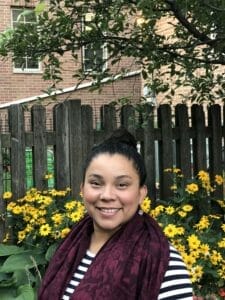
Sonia Gomez, PhD Candidate | History
2017-2018 MIT School of Humanities, Arts, and Social Sciences Diversity Predoctoral Fellow
What drew you to the MIT Diversity Predoctoral Fellowship program? Since the fellowship involves being in residence, what about it seemed like a good fit for you and your work at the time that you were applying?
Though MIT is popularly known for their strong programs in science and engineering, as a historian I recognized that MIT was also home to many esteemed scholars in fields related to mine. For example, Emma Teng’s work on Chinese immigration and interracial intimacies aligned well with my dissertation project. I thought I could probably learn a lot from her. I suggested working with Professor Teng in my application materials and now she is my faculty mentor! I was also itching for a change of scenery. I imagined being in a new city and intellectual environment would breath new life into my project and offer me renewed energy to finish my dissertation. Thankfully, I was right.
At this point in the fellowship year, is there a particular experience that stands out to you? Or, something you hadn’t counted on that has since proven important for you or your project?
I am part of a small interdisciplinary cohort of 9 scholars. Being a part of this fantastic group of scholars who work outside of but adjacent to my subfield has really helped me to think about my project in new ways. Moreover, my faculty mentors, Emma Teng and Jeff Ravel, are incredibly supportive. I think I got lucky because I have a joint appointment in History and Global Studies and Languages, which allows me access to resources from both sections (MIT has sections not departments).
MIT is unique in requiring applicants to submit a personal statement (rather than a research statement). Can you describe how you went about preparing the statement in order to present a more personal facet of yourself as an applicant?
I presented a draft of my personal statement to my colleagues at the Center for the Study of Gender and Sexuality when I was a residential fellow last year. Their feedback was very helpful in determining what parts I needed to expand on or slim down. They also gave me suggestions for structure, which I think, made a big difference in the final draft. Another colleague who was a postdoc last year at U of C offered to read my statement as well. I took him up on his offer. He gave me excellent advice. He encouraged me to lead with a compelling narrative about my scholarship that would be memorable. He asked me something along the lines of: How do you want readers to remember you? which I took to heart when I was revising my statement.
Project description
My dissertation, “From Picture Brides to War Brides: Race, Gender, and Belonging in the Making of Japanese America,” is a history of Japanese immigration to the United States that focuses on the experiences of women and the role of gender in immigration policy and practice.
More about the MIT SHASS Diversity Predoctoral Fellowship
The purpose of the Diversity Predoctoral Fellowships program is to enhance diversity in the School and to provide the Fellow with additional professional support and mentoring as they enter the field. The fellowships are intended to support scholars from a wide range of backgrounds, who can contribute to the diversity of SHASS and the higher education community. Applicants from members of racial and ethnic groups that have historically been underrepresented in the humanities and social sciences and from disadvantaged backgrounds are encouraged to apply. These Fellowships support graduate scholars for a 9-month appointment at MIT that generally runs from September through May. They offer an opportunity for scholars who plan a career in higher education and have completed all other PhD requirements to finish their dissertations with access to libraries and faculty of the School. Fellows may be pursuing the PhD degree in any discipline or area taught in the School of Humanities, Arts, and Social Sciences.